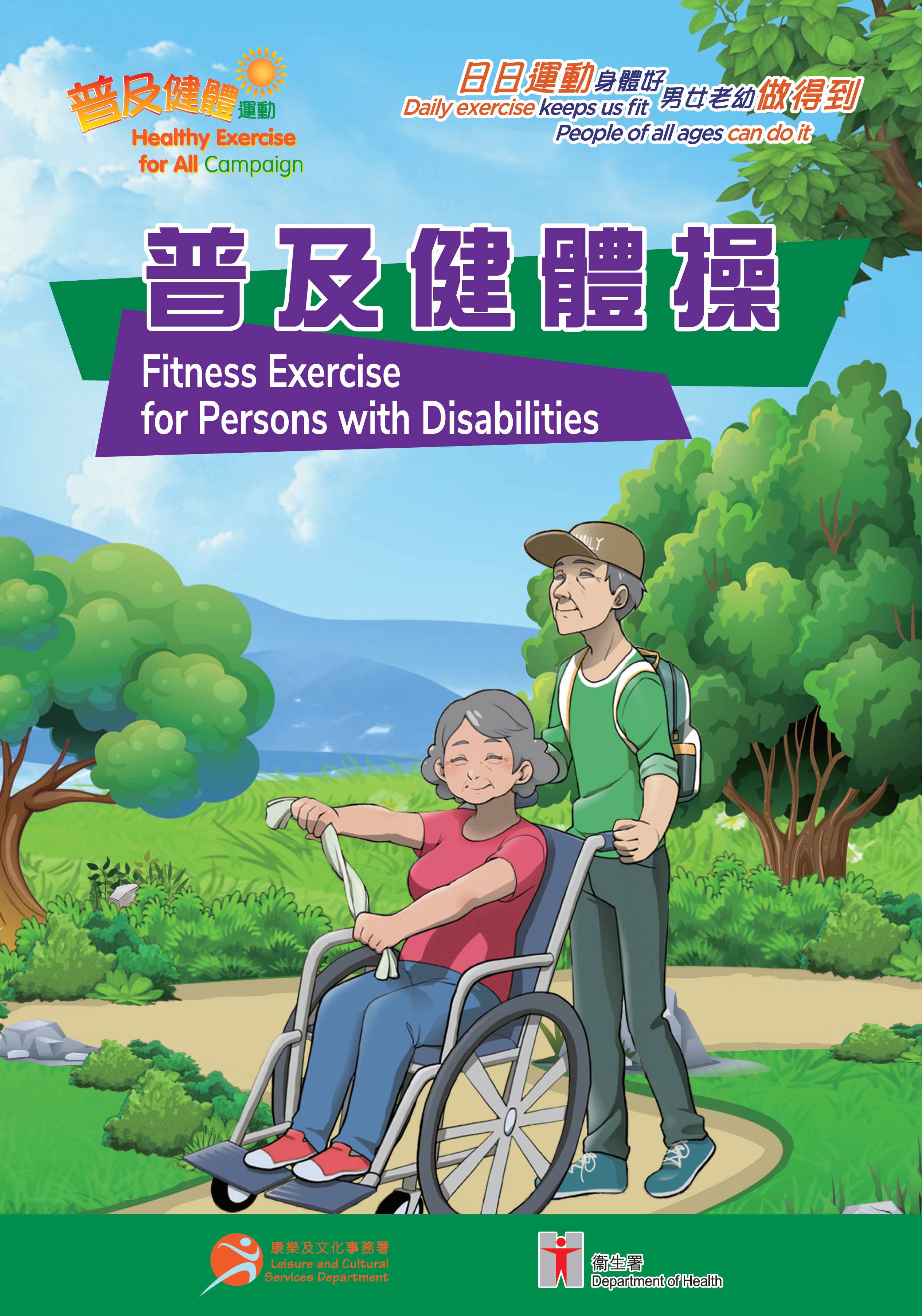 Leisure and Cultural Services Department - Healthy Exercise for All CampaignLeisure and Cultural Services Department
Leisure and Cultural Services Department - Healthy Exercise for All CampaignLeisure and Cultural Services Department
Fitness Programmes for Persons with Disabilities
Introduction
Moderate amount of exercise is good for our health, especially for persons with disabilities. Inactive people are prone to a number of health hazards. Prolonged inactivity will result in muscular atrophy and reduce the agility of the joints. It may also lead to osteoporosis, obesity and cardiovascular diseases, etc.
Benefits of Exercise
Exercise regularly at moderate amount can promote health and bring you the following benefits:
 reduce the risk of cardiovascular diseases (such as coronary heart disease);
reduce the risk of cardiovascular diseases (such as coronary heart disease);- help prevent illnesses like stroke, osteoporosis and some types of cancer (e.g. colorectal cancer);
- enhance the mobility and flexibility of joints to lower the risk of injuries and falls;
- enhance physical fitness and strengthen cardiopulmonary functions;
- burn calories and maintain a healthy body weight; and
- relieve stress, build-up self-confidence, extend social circle and establish good interpersonal relationship.
Points to Note For During Exercise
Consult your physician and understand your condition before doing exercise. Take note of the following points when exercise:
- choose the right exercise that suits your physical fitness;
- exercise in an environment with good ventilation and suitable temperature;
- wear appropriate sportswear and sports shoes;
- do not make any drastic or abrupt movements, particularly when the exercise involves the neck, waist and knees;
- breathe naturally while doing exercise; and
- if you feel unwell when doing exercise, you should slow down or take a rest, if the unwell condition persists, you should consult your physician for safety sake.
A Guide to Exercise
| 1. | Posture Diagrams of recommended postures for exercises: Supine lying Sitting on a chair Standing If not specified, persons with disabilities may choose one of the following postures according to their own ability :
|
| 2. | Breathing Exercise Suitable for all persons - Close the mouth, breathe in through the nose slowly to expand the chest and then breathe out through the mouth. |
| 3. | Frequency and Duration of Exercise For beginners - Twice a week and 15 minutes each time and progressively increase the duration to 30 minutes each time. |
| 4. | Special Care For those who are very weak, they can exercise with assistance from their family members or carers. |
| Acknowledgements: Hong Kong Physiotherapy Association The Gymnastics Association of Hong Kong, China Hong Kong Association of Sports Medicine and Sports Science |

